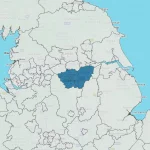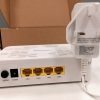Ofcom Launch Improved UK 4G and 5G Mobile Speed and Coverage Checker

The UK communications and media regulator, Ofcom, has today launched an overhauled mobile network coverage checker, which includes enhancements that are intended to better match people’s real-world experiences, particularly of modern 4G and 5G (mobile broadband) service performance and signal strength.
Firstly, it’s important to recognise that Ofcom cannot work miracles, which is to say that mobile network coverage and performance remains a difficult thing to study because end-users are always moving through different areas (indoor, outdoor and underground), using different devices with different capabilities and the surrounding environment is ever changeable (weather, trees, buildings etc.).
All of the above can impact signal quality, and that’s before we even consider any differences in local network (backhaul) capacity or spectrum usage between mast locations (cell sites). Suffice to say that any improvements the regulator can make in this area are welcome, but there are still limitations to consider in their ability to accurately model such things.
Advertisement
Having said all that, the regulator’s previous Mobile Coverage Checker was based on predictions from the mobile network operators themselves (EE, Vodafone / Three UK and O2), which were generated using computer programs that simulate the way mobile signals travel from mobile masts and are blocked by obstructions such as hills, trees, and buildings. But as we all know, this isn’t particularly reliable.
What’s changed
The new Map Your Mobile Postcode Checker (URL may not be live until later) is promoted as being the “most comprehensive tool for comparing mobile coverage and performance to be made available in the UK” and allows users to enter their postcode and obtain a “local map of which networks are available, together with data showing which operator’s network gives the best performance for their postal district.”
Crucially, the new checker doesn’t only rely on data from mobile operators. Firstly, it will now assess predicted signal strength information at a more granular level (down to 50 square metres, instead of the current 100 square metres), which should help to reduce the local level uncertainty to some extent. But take note that this currently only shows for 3 of the 4 primary mobile operators (they’ll do it for all of them shortly).
The checker also includes crowdsourced data from Opensignal that is based on people’s real-world experiences, as well as the usual predictive data from the UK’s mobile operators. It also adds a new threshold for what constitutes a good mobile signal strength, to reflect mobile users’ changing habits and expectations. For example, Ofcom will consider a test via Opensignal as being successful if it delivers a 5Mbps download speed, 1.5Mbps upload and 50ms of latency.
Advertisement
Just to be clear. The regulator uses this crowdsource data in two ways. First, to give a performance score – a percentage – for each mobile operator at the postcode district level (or wider postcode area level for the small proportion for which they don’t have sufficient data). This is the proportion of crowdsource tests that were successful.
The second uses this data to inform the thresholds Ofcom uses for predicted signal strength (i.e. to portray where there is good or variable coverage). There is typically no straightforward relationship between signal strength and whether the connection will successfully deliver the aforementioned 5Mbps. A stronger signal is more likely to be successful, but factors such as interference from other users and masts or network congestion can prevent the connection being successful. Ofcom have therefore used their judgement to set the thresholds to portray where a successful connection is more likely (i.e. good coverage).
All of this means the new checker will give different results than the previous tool, but should more accurately reflects users’ modern needs.
Natalie Black, Ofcom’s Group Director for Networks and Communications, said:
“Map Your Mobile shows detailed coverage and performance based on what smartphones need today. Put in your postcode and find out which mobile network is right for you.”
Telecoms Minister, Sir Chris Bryant, said:
“Access to fast and reliable mobile coverage is essential for delivering the change our country needs to thrive and boost economic growth. For too long there has been a frustrating gap between coverage reports and the real signal people experience in their daily lives.
This new tool provides consumers with accurate, postcode-level information so they have the power to choose the network that works where they need it most – whether at home, work or on their commute. It is fantastic to see this practical step being implemented to improve connectivity for everybody across the nation.”
At the time of writing, we haven’t yet been able to give the new mobile coverage and performance checker a try ourselves, although we will do later this morning. But at the very least this may make Ofcom’s checker more useful than the checkers operated by the major mobile network operators (EE, Three UK, O2 and Vodafone).
Advertisement
Today’s launch is expressed as being “just the first step“, with Ofcom planning future updates to the checker with fresh data and useful information. The regulator has previously also indicated that it may conduct a targeted or larger scale measurement programme to help in this effort, although they’ve not yet made a firm decision about whether to proceed with that.
Finally, it’s important to point out that there is still a firm distinction between the new mobile checker (which has a coverage map and performance stats), and the aggregate coverage stats they publish in their Connected Nations reports. The latter will continue to report based on their current metrics, although Ofcom may optionally also include some new metrics alongside these from the extra data they now collect.
UPDATE 8am
Having managed to test the new checker this morning, we can see that the inability to split 4G and 5G signals in the results might well end up being a point of frustration. We can understand why the regulator has opted for a more simplified approach, but there remains wide interest in the technology splits involved, as they can and often do deliver big differences in performance. This could become particularly tedious once 6G arrives.
As a result, Ofcom’s checker doesn’t yet provide a truly one-stop-shop solution for examining such things, which seems like a missed opportunity. This is especially true when you consider how much marketing investment and hype mobile operators put behind promoting the latest generations of a new mobile technology.
Mark is a professional technology writer, IT consultant and computer engineer from Dorset (England), he also founded ISPreview in 1999 and enjoys analysing the latest telecoms and broadband developments. Find me on X (Twitter), Mastodon, Facebook, BlueSky, Threads.net and Linkedin.
« Virgin Media UK Returns to 24 Month Contracts for New Customers






















































Ofcom new map are useless now. I prefer to show 4G and 5G but now it no longer show as 4G or 5G. Rubbish very bad designed!
The coverage check no longer breaks out reporting specifically for 5G.
The old and new URLs now return the same content.
I know a postcode of the barber shop where there is no coverage for either EE nor Vodafone outside. I reported to both of them many times in the past 5 years and they still say it’s all good. Yet I signal.
Using the postcode of the place it reports EE being 85 and Vodafone being 72.
I know of a coffee shop in central London where neither EE nor Vodafone have signal yet both of their coverage checkers report strong reception in that area… It’s all BS!
The 85% and 71% are performance for the postcode area (e.g. SW1A) experience “where coverage exists” – you may find that the checker for that address (e.g. 10 SW1A 2AA) confirms there is no coverage at that address.
More improvements are planned and needed.
You need to click the “address” tab (above the map – ‘Map’ ‘Address’ ‘Postal District’) where it’ll give what it expects for that specific address – the “postcode” result is just the wider postal district area overall.
Change the colours, but the same BS results.
The map is really hard to understand… perhaps that’s the point.
Nothing to see here, move along…
Currently using a WIFI hot spot via an ID mobile sim to use my phone as I’m unable to get any signal at work via the UKs best network who I’m stuck in a contract with.
I’ve reported the signal issue to EE & they run the usual tests but they say sorry, nothing wrong with the signal do you wanna buy a new phone?
I’m looking to upgrade my phone in the near future, I can guarantee it won’t improve the situation.
There appears to be some confusion which I posted about first thing between coverage and experience localisation.
Coverage is for the postcode and address entered (e.g. 10 Downing Street SW1A 2AA), down to 50 sq metres, but experience is for the postcode area (e.g. SW1A which includes all Whitehall, St James Part, Green Park and Buckingham palace. Here in Central London it’s worth noting that All MNOs fail to hit the OfCom postcode target of 88%!
Personally, I don’t see the point in telling you that an address has a signal, and then telling you what the average experience is in a square mile or more.
I rather use this checker instead for mobile coverage
https://bidb.uk/ (they show 3G/4G/5G on mobile coverage and also show for any future work)
While that site is good, and I look at it fairly often to see about broadband rollout in my area, the mobile signal coverage maps really don’t give an accurate picture (and appear to be from what the networks claim, rather than reality)
This is a shameful example of how complacent Ofcom is at coverage reporting.
Under the covers, they have moved from 100m resolution per pixel to 50m resolution, which means that there is potentially 4 times the detail. However, it’s 2025, and mapping data should be hugely better.
I appreciate that actual user experience and coverage are two different things, but getting a 1m resolution coverage map is possible, which would be a great starting point. This is just a lick of paint on an old banger.
This project can only really be seen as a fail and a big missed opportunity to actually provide more useful data to consumers.
Has anybody at Ofcom picked up on the huge differences between the coverage maps that networks display on their own website, and the data they supply Ofcom with? If e.g Three are claiming excellent coverage on their site but tell Ofcom to only expect outdoor coverage that it’s reasonable to think that’s within the remit of the regulator to address.
It’s a lot better for me now. It says “Coverage good (outdoors only)” which is true. It’s either Good or Variable, with two separate versions for each based on Outdoor and Indoor strength.
Before the changes, it used to report “good” signal even though indoor coverage was poor. At least it’s more accurate and realistic now.
Maybe we’re using the wrong technology if weather, buildings and tree’s affect the signals so much, or we just flatten everything in Britain and wave to each other.
It’s funny that this doesn’t appear to happen to such a degree in so many nations other than Britain.
It’s a mess. This new coverage checker returns spurious results as others have stated in the comment here.
Everyone knows that ir should be based on drive testing but the likes of Inakulum or Streetwave, but if they did that everyone would be horrified as it would show that the UK networks serve no where near the 98% of population they have been claiming to and which ofcom have been complicit in validating..